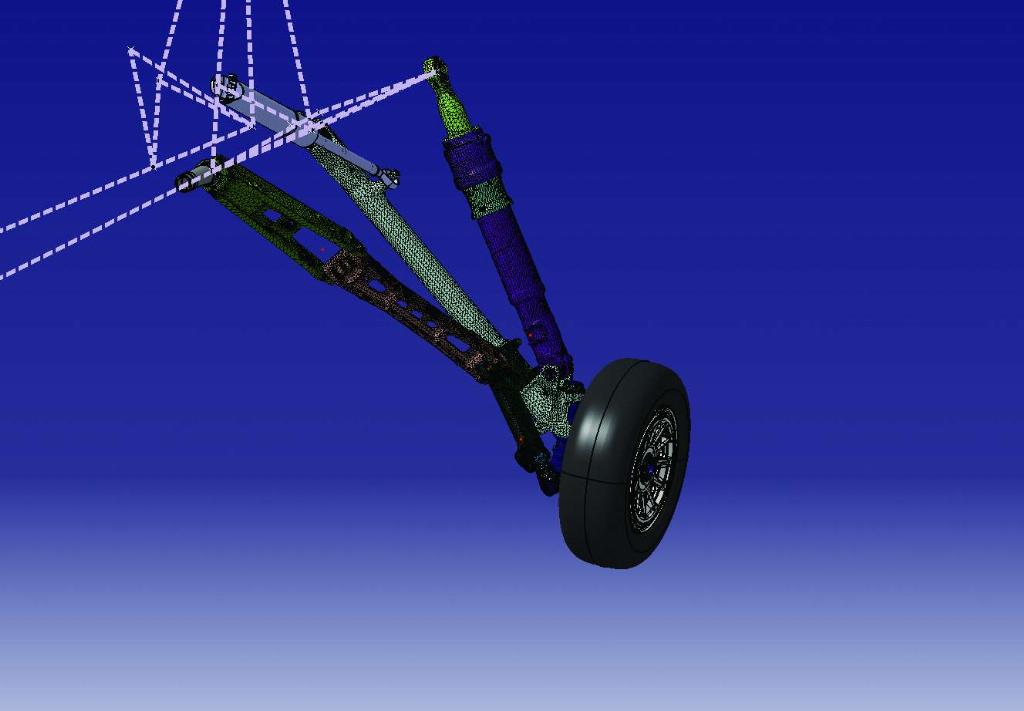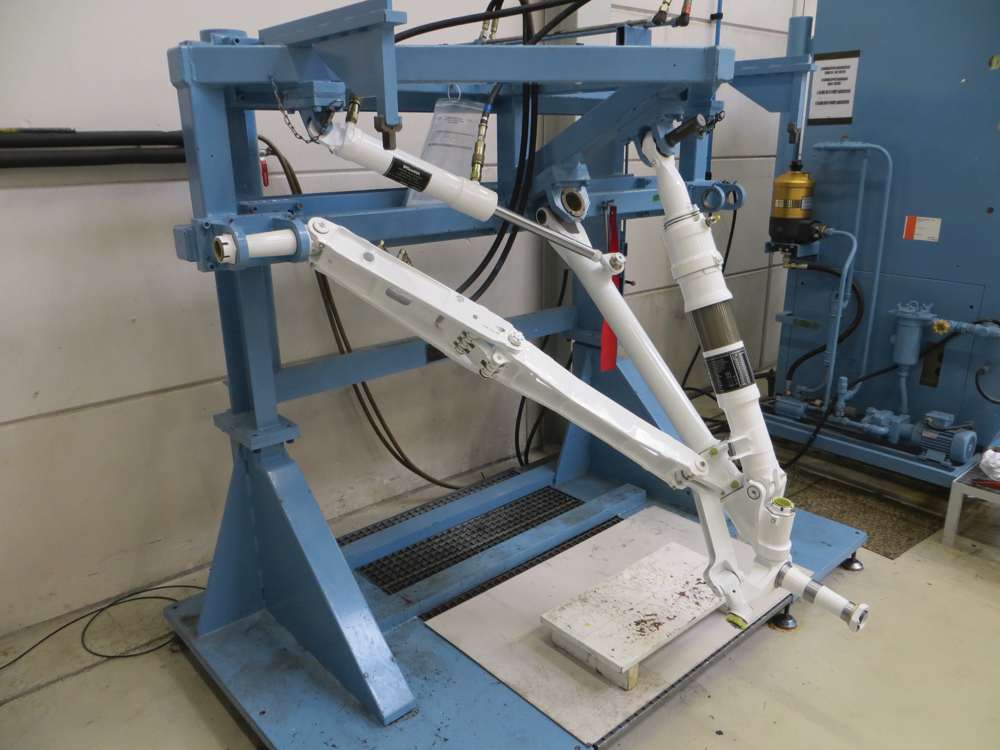Safety and performance at minimum weight

Siemens PLM software reveals how it helps GKN Aerospace Fokker Landing Gear save up to 30% of performance and loads development time. Aerospace Manufacturing reports.
Landing gear designs can come in various shapes and sizes. Because the choice for a certain configuration greatly impacts many overall behavioural aspects of the entire aircraft, the landing gear needs to be developed along with the rest of the structure.
The main purpose of a landing system is obviously to reduce impact loads by absorbing and dissipating kinetic energy. But it also must provide suspension as well as wheel steering and braking while the plane is taxiing on the tarmac. Most landing gear systems, especially for faster aircraft, are retractable to reduce aerodynamic drag during flight. But these are usually heavier and can take up to 3% of the total aircraft weight. Especially for military gear, design engineers must make sure that all fits in a limited volume with prescribed aircraft interfaces.
Reducing weight and volume without compromising operational performance and safety is a real challenge. And as the development shouldn’t delay the design of the overall aircraft, landing gear manufacturers are looking for solutions that help them investigate as many alternatives as possible in the shortest possible time span.
Understanding landing
For more than 30 years, the engineers at GKN Aerospace Fokker Landing Gear business in Helmond, The Netherlands have gathered competencies in design, development and production, as well as repair and overhaul of landing gear systems. GKN Landing Gear is making large investments in R&D, aiming to deliver the first load-carrying composite parts.
GKN Landing Gear’s specialist development engineer, dynamics Dr Bert Verbeek and commercial director, Guus Kolster have seen on many occasions how proof of experience has played an essential role in being considered a reliable partner by OEMs. But they also feel that over the last decade the pressure on time and budget has dramatically increased and notice that the industry has evolved to even tighter schedules. These trends significantly influence product design.
“Unlike consumer products, landing gear doesn’t come in huge sales volumes,” says Kolster. “As a consequence, the time and budget we spend on development has an enormous impact on commercial success. There is little room for trial and error.”

Providing powerful software tools and delivering efficient simulation solutions are core business objectives of Siemens PLM Software. For many years, the software solutions in the Simcenter portfolio have been part of the standard development process at GKN Landing Gear. These include LMS Virtual.Lab Motion software for 3D multibody dynamics analysis and LMS Imagine.Lab Amesim software for 1D multiphysics simulation. Verbeek was one of the first engineers to begin the successful collaboration between GKN Landing Gear and Siemens.
“Before, we had a different software package for 3D multibody simulation of the mechanism, which we had to combine with a lot of user programming for damping models and other systems,” he says. “The process was time-consuming and error-prone. Moreover, it was a real hassle to transfer knowledge to new members in the team, which is greatly improved now by using LMS Amesim. We realised we needed a more professional and streamlined process that would not only make our lives easier but increase our credibility and ability to collaborate with industry partners.”
LMS Virtual.Lab Motion and LMS Amesim resonate well in the aviation market, and the market acceptance was certainly one of the crucial arguments in selecting these products.
“As landing gear development needs to happen in parallel with the rest of the structure, we have to be able to effectively exchange information and ideas with our partners,” says Verbeek. “Our customers give us the information we need to calculate ground and interface loads, and from our side we give them our models so that they can refine the full aircraft simulation. All this can happen much easier if we work on a similar platform, or at least with software packages that communicate well with each other. Also, when we meet during a project to exchange ideas or preliminary results, it increases our credibility if we show we have been using a professional solution with a solid reputation and can present data and displays in a format that looks familiar.”
Deploying a new solution is never easy. It takes training and effort to adapt users to a new graphical user interface, initiate a set of models and build databases with validated components.
“The support from Siemens PLM Software helped us with the daily use of the software,” continues Verbeek. “In addition, we do small projects with their R&D team to improve the modelling accuracy of certain parts.”
Along with the new software environment, the collaboration with Siemens PLM Software engineers resulted in a spectacular time saving.
“When we compare the current process using LMS Virtual.Lab Motion and LMS Amesim to the previous one, we saved up to 30% of time,” confirms Verbeek. “We could use this time to further validate and improve physical descriptions in our models and to do additional simulations. We are working towards parametric 3D models for most of the important landing gear configurations as well as parametric 1D libraries for shock absorbers and tyres.”
Automating and optimising
At present, the engineers have the entire simulation process installed and operational, including interfaces between various software, parametric models and optimisation loops for performance, weight and cost. The company now wants to automate the process, so once again it’s collaborating with Siemens PLM Software.
“Firstly, we’re further extending and improving our libraries,” says Verbeek. “We are creating additional 1D models for shock absorbers, as well as 3D multibody models and CAD parts. And we’re looking into new shimmy modelling options. Secondly, we’re having scripts created to run the entire simulation process without user interaction. This is yet another project that we’ve started with Siemens PLM Software experts.”

The engineers are convinced that this additional work will once more boost their productivity.
“By moving the original process to a professional software environment, we had already saved about 30% of time, but we expect even more. In the current process we still actually evaluate just one configuration that we choose upfront, as we don’t have time to build several more. This means we still rely a lot on intuition and experience. We’re sure this situation will change when we have these automation scripts.”
Kolster is also optimistic about the outcome: “Considering that we’ve about three or four fundamentally different 3D layouts that we can each combine with a few shock absorber models, my rough estimation is that after automation we could investigate about 15 to 20 design layouts within the same time frame.”













